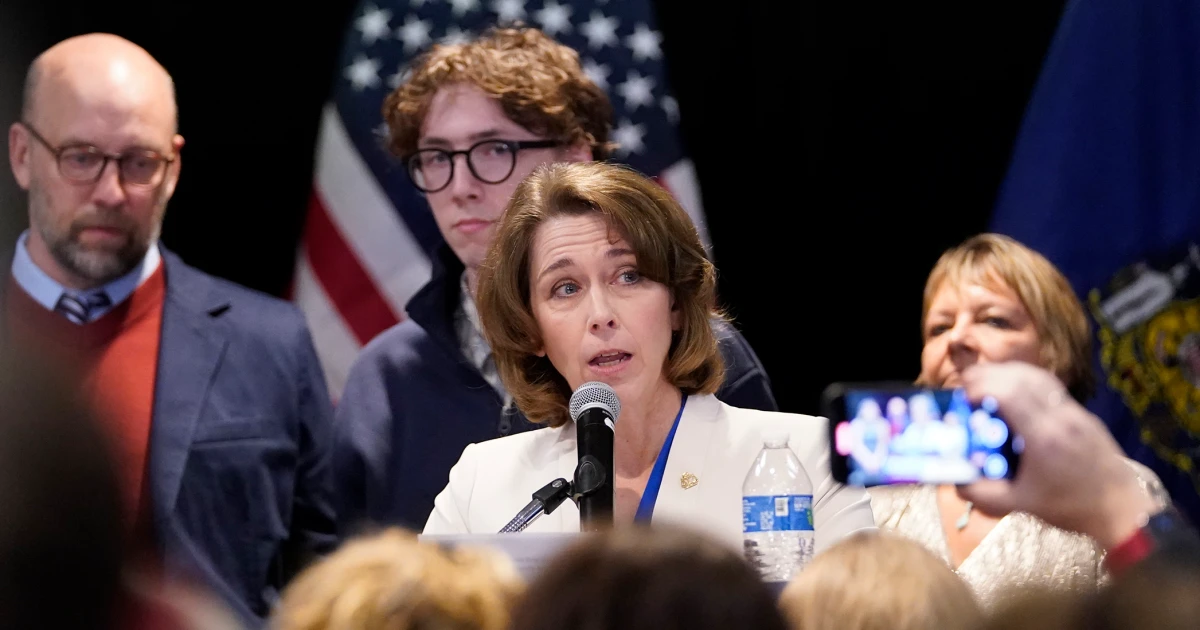The decisive victory by Democratic-aligned Susan Crawford in Wisconsin’s Supreme Court election is proof that the political engagement of the “resistance” remains sky-high in Donald Trump’s second term. And it simply overwhelms Republicans in a lower-wattage contest like this.
Crawford’s 10-point win over Republican-backed Brad Schimel is a landslide compared to the last three presidential races in Wisconsin, all of which were decided by less than 1 point. The mismatch in intensity between the two parties is the reason why.
Turnout for Tuesday’s court race stands at just more than 2.3 million. That’s a massive figure for an early spring, off-year race, but it’s still a far cry from the more than 3.4 million who voted in the 2024 presidential race in Wisconsin. And that falloff came disproportionately from the pro-Trump side.
The “resistance” enthusiasm comes from a particular segment of the Democratic base: voters with college degrees, higher incomes and vehemently anti-Trump views. They are predominantly, but not exclusively, white and are most concentrated in metro areas and college towns. They are plugged into heavily political, progressive-flavored media and have come to serve as a limitless source of online-fueled fundraising for Democratic candidates. And they are extremely motivated to vote, no matter the office, seemingly viewing any and every election as an opportunity to oppose the Trump-led GOP.
No place in Wisconsin embodies these demographics like Dane County; for that matter, few places in America do. Home to the state capital and the University of Wisconsin-Madison, Dane is almost 80% white and is the most highly educated county in the state. In the county, 56% of the white adult population has at least a bachelor’s degree, and more than a fifth of all adults have an advanced degree. It’s far more affluent than most of the state. All of this has led to it becoming a vote bank for Democrats.
In Tuesday’s election, Crawford won Dane by 64 points, and voter turnout in the county was 78% of what it was in November. And the voters who turned out were, somehow, even more Democratic-friendly than in November: Crawford’s vote share in Dane was 8 points higher than that of former Vice President Kamala Harris. In other words, Wisconsin’s biggest blue bastion got even bluer.
Compare this to the other end of the political spectrum. The political base that powered Trump to victory in the Badger State couldn’t be more demographically opposite. Trump drew overwhelming support from white voters without college degrees who are found primarily in exurban, small-town and rural Wisconsin. In 2024, Trump also folded in new support from nonwhite voters, many of them younger, male and first-time participants, who are more clustered in and around Milwaukee.
On Tuesday, there was significant slack in this coalition. Two places tell the story.
First, there’s the so-called “Driftless Area,” a mostly rural and small-town swath of counties along and inland from the Mississippi River. It was here in particular that Trump struck gold with blue-collar white voters when he first ran in 2016, and in 2024 he carried the area again by double digits. But in Tuesday’s election, there was far more drop-off in the Driftless Area than in Dane, with turnout running at 67% of November’s level. Tellingly, Crawford actually won the Driftless Area by 6 points, testament to just how disproportionate that drop-off was.
Then there’s the Milwaukee area, where much of the state’s relatively small nonwhite population resides. Trump held Harris to a 44-point margin in Milwaukee’s majority Hispanic precincts last year, an impressive achievement for a Republican compared to the past. But in those same precincts Tuesday, turnout plummeted to just 49% of November’s level and the Democratic margin expanded back to 66 points.
This is all an inversion from the not-so-distant past, when the Republican coalition tilted toward the suburbs and was seen as more politically engaged. Back then, it was Democrats who had to contend more with the challenge of motivating infrequent voters for elections like this. Now, it’s a problem for the Trump side.
The president has assembled a unique coalition that, when fully activated, can win the popular vote in a national election. The question for the next two years is whether Republicans can rely on that coalition in an election that doesn’t feature Trump’s name on the ballot.
Steve Kornacki
